The Gory Glory of Japanese Ghost Tales
How artists across centuries worked to convey the vivid otherworldliness of noh and kabuki theater.
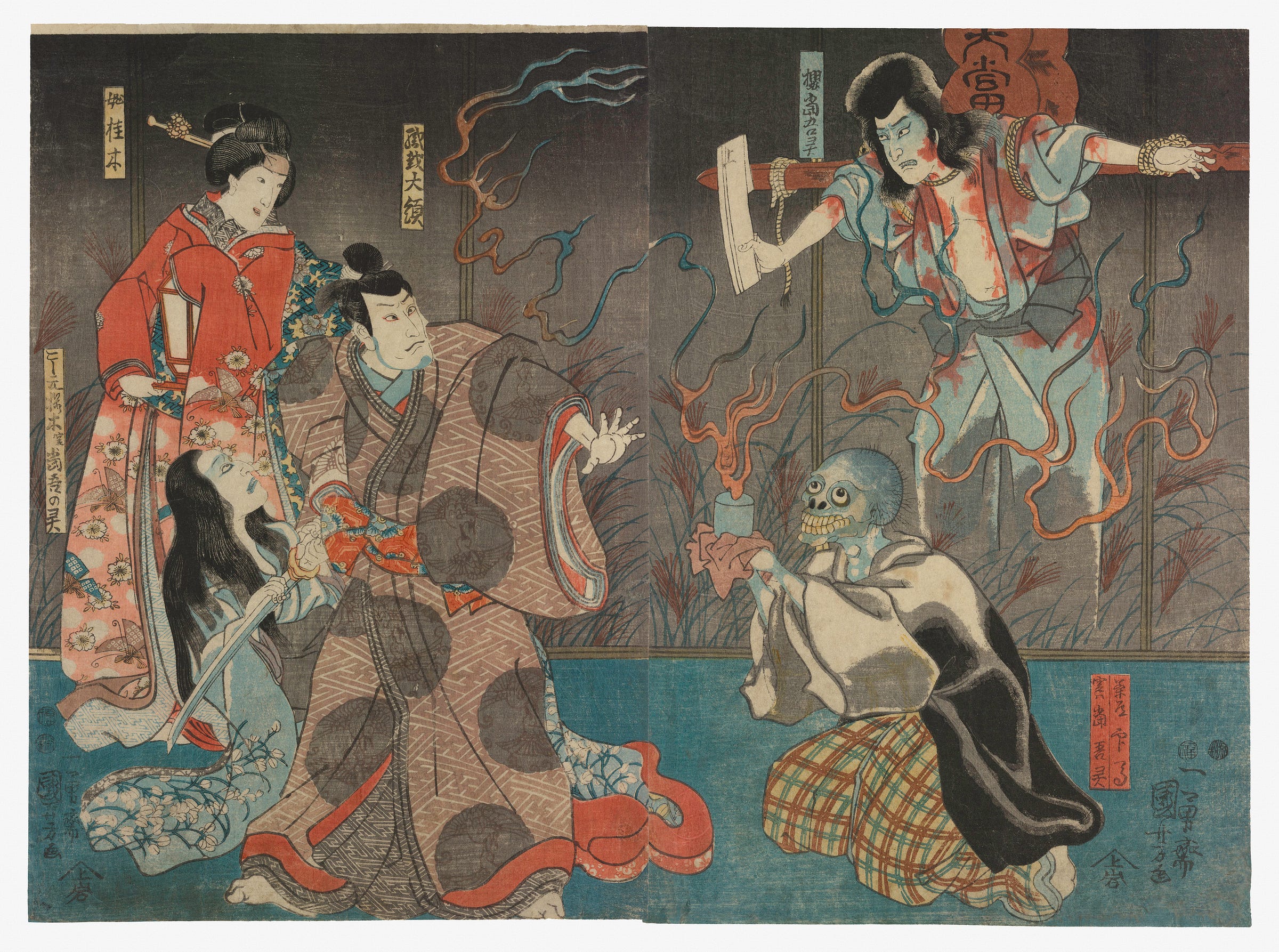
Staging the Supernatural
National Museum of Asian Art, Washington, D.C.
through October 6, 2024
THE WORLD IS A STAGE, and because we are all merely players, we crave theater to explore life in a way that is safely removed. The action onstage is “there,” while we, the audience, sit to watch quietly from a distance. We are witnesses to a visual spectacle and not active participants, except to react. Only when we clap or cheer or hoot is the barrier broken, as Real Life asserts it was there all the time.
Theater is the star of Staging the Supernatural, a highly colorful new exhibition at the Smithsonian’s National Museum of Asian Art. The show seeks to portray how “the supernatural” is historically embedded in Japanese culture, and how Japanese theater has graphically displayed this ghostly tradition as visually staged spectacle. The artworks used to convey the supernatural presence in Japanese theater are woodblock “Ukiyo-e” prints, with each depicting a scene in which people from the “floating world” of everyday life interact for good or evil with ghosts that are ever-present and inescapable. The earliest Ukiyo-e prints, dating back to around 1600, were monochromatic and printed only in black ink; over the next century, color began to be added, brushed in by hand. Multicolored woodblock prints appeared in the mid-eighteenth century, and by the late nineteenth century, more synthetic colors were added.
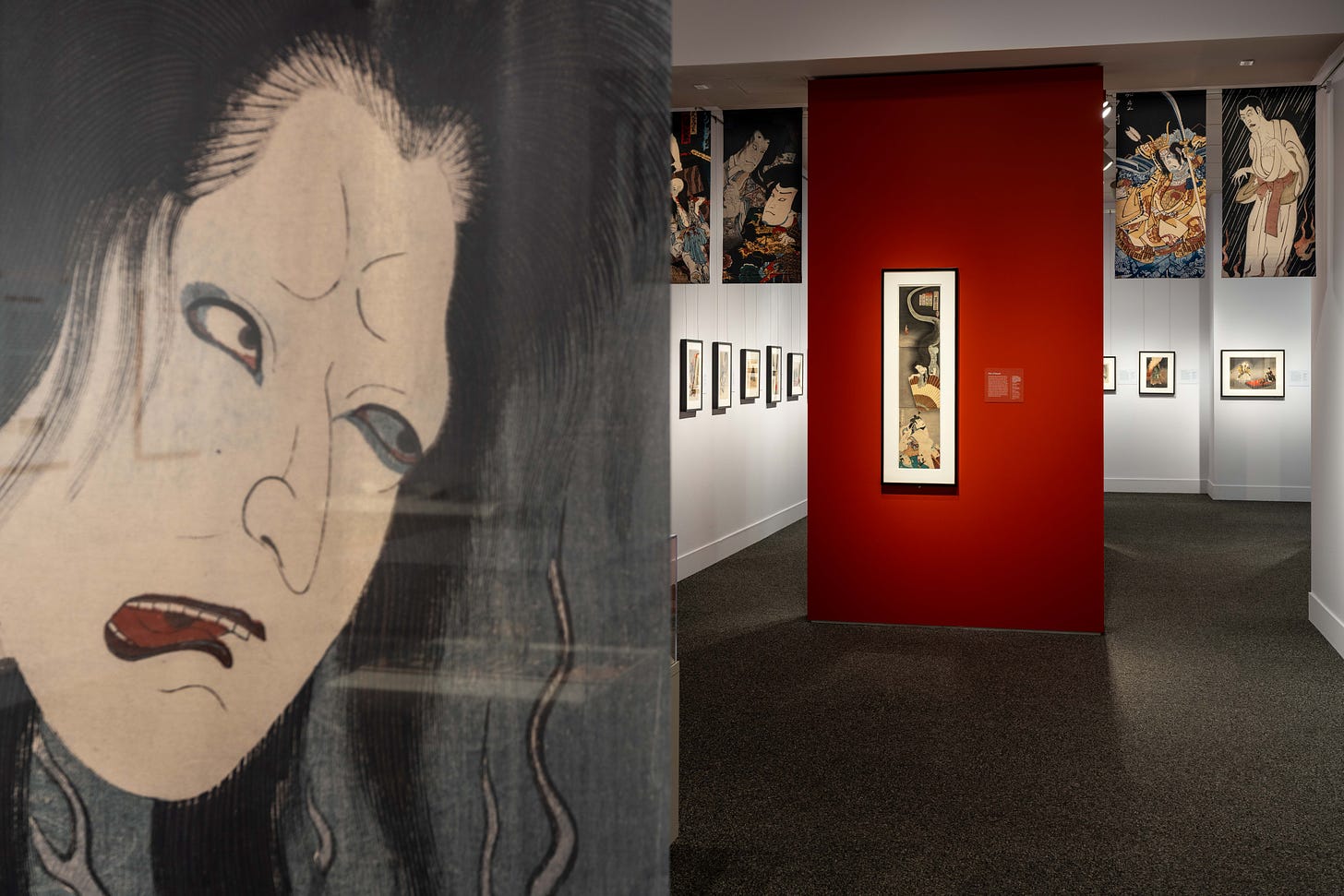
For centuries, Yokai (supernatural beings), Yurei (ghosts), and Bakemono (monsters) appeared in moralistic Shinto dance dramas known as “noh theater,” interweaving Japan’s folklore culture of the supernatural with the Shinto belief that spirits are omnipresent. Buddhism added the idea that the way a person lived determined if he or she would go to the world of the dead (or the “Pure Land,” in one major variant) or be thrown to Hell. Before that decision was made, a soul would undergo a period of purification and pacification in the bardo, an intermediate world of shadows. If the soul failed to be purified there, it could return to the land of the living as a ghost and haunt those responsible for its bitter fate.
One of the most famous of the supernatural stories is that of Oiwa, a faithful wife who was poisoned by her husband so he could marry his rich neighbor. The poison causes her hair to fall out in clumps and her eyes to bulge. Finally, her husband ties her to a board and throws her in a river to die. (The details have varied through the centuries; in some versions of the tale, she is driven mad by her appearance and stabs herself to death.) When he returns later, Oiwa’s ghost rises from the water and she haunts him thereafter until he dies.
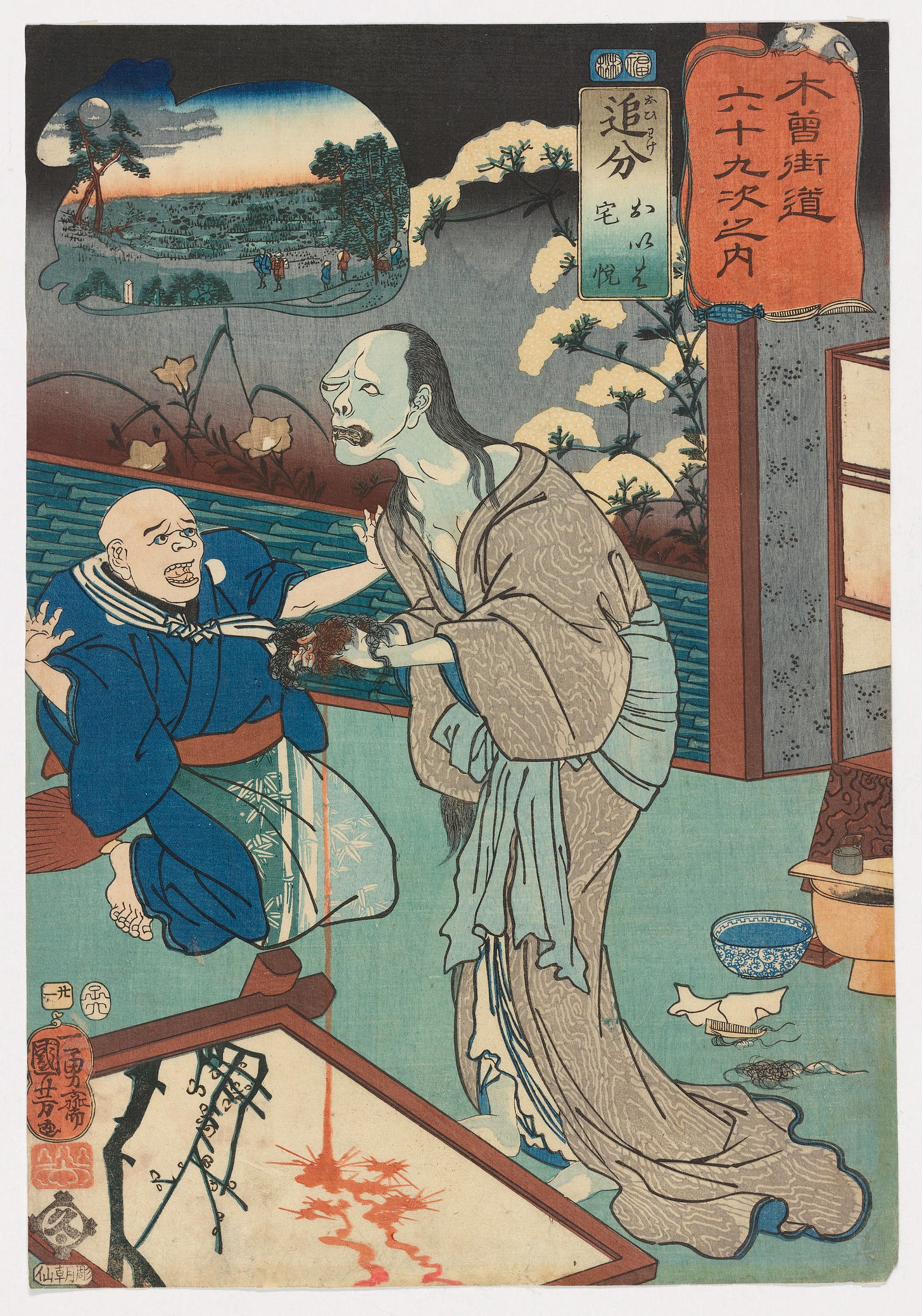
Frank Feltens and Kit Brooks, both curators of Japanese art at the museum, put together Staging the Supernatural, and in the exhibition catalogue they describe how the division between the real world and the world of supernatural beings “has been remarkably porous in Japanese culture.” The Edo period (1603–1868) was an essential stage in developing ideas about the presence of the supernatural, and it is represented with several works in the exhibition. But the main focus is on the era when those ideas would become fully realized: the years between the Meiji restoration in 1868 and the end of the Taisho period in 1926. Japanese society underwent rapid transformation in these decades as urbanization brought together diverse populations from a variety of regions. Technology connected people as never before, and the once-isolated island nation underwent transformative and sustained contact with the West.
During these years of widespread cultural and social disruption, audiences became eager to embrace the supernatural—people saw ghosts as convenient “explainers” of modern life’s complexities. Both noh theater and the kabuki theater that evolved alongside it—a style of drama and dance most familiar to Western audiences today for the performers’ distinctive white makeup—used ghosts in their productions, with noh aimed at a more elite audience and kabuki organized as a broader mass entertainment.
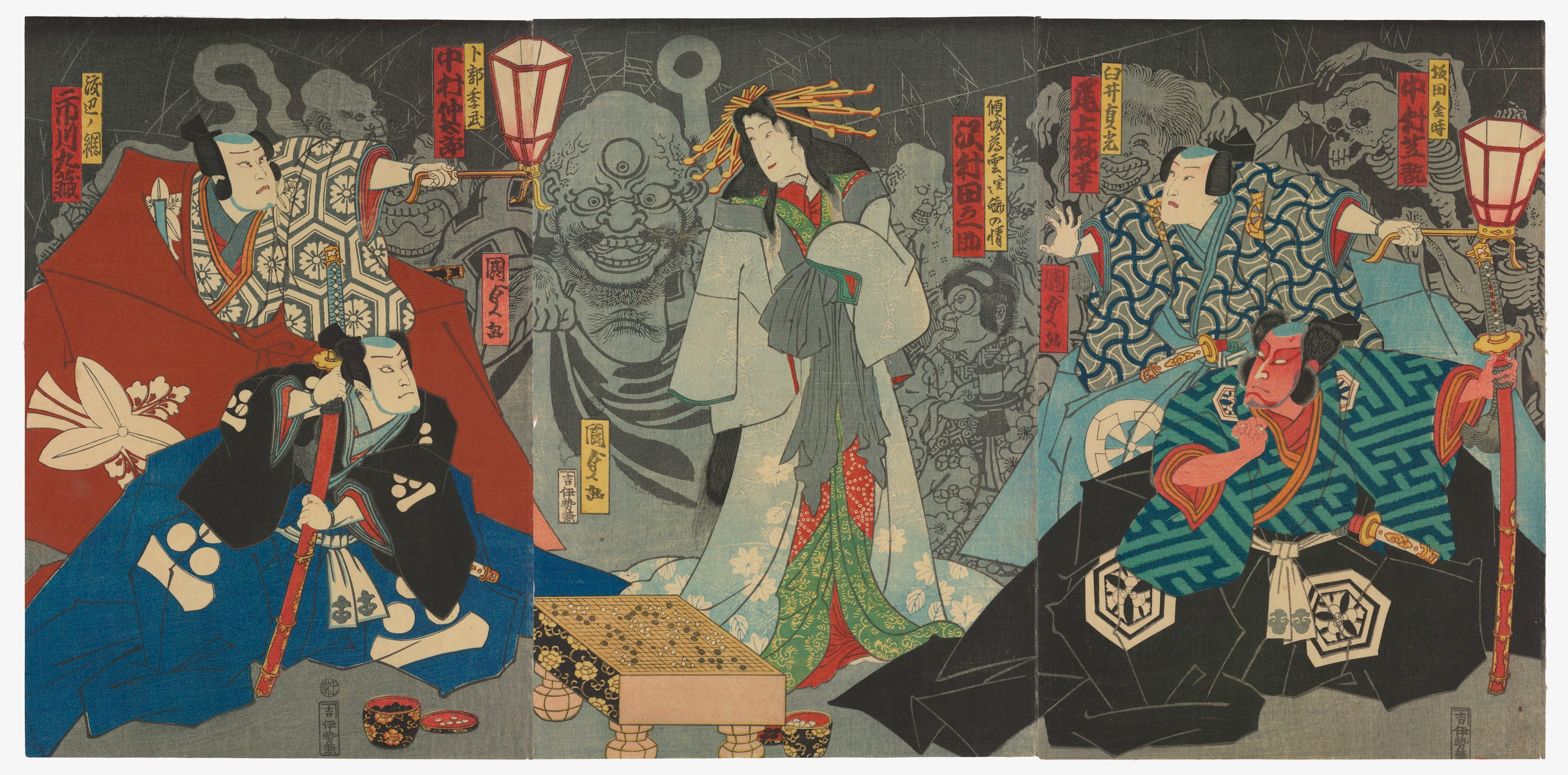
The first section of Staging the Supernatural was curated by Feltens, and it focuses on noh theater in years after 1868. The shogunate that had ruled Japan for centuries was abolished that year, leading to the loss of the elite patron base of warriors and aristocrats that had sponsored noh theater. With the demise of the shogunate, practitioners of noh had to reinvent the art. It evolved during this time into a more “representative form of cultural entertainment”; it also came to receive ideas and economic support from new international contacts, interlocutors, and patrons—including American admirers.
Woodblock prints depicting moments from the plays played a major role in saving noh by helping to popularize it for a broader public audience. The mass production of woodblock prints used paper rather than the silk used in high art paintings, making them accessible to a much larger market, and their creators found mass appeal through depicting “floating world” scenes of everyday life rather than profound or obscure moments only elites could appreciate.
Brooks curated the second section of the exhibition, which focuses on kabuki theater. Kabuki was a more exuberant kind of entertainment: Actors wore flamboyant costumes and masks, painted their faces with great exaggeration, and strode the stage with bombast. Determined to attract a broader audience than noh could find, practitioners of kabuki made ghost stories a central theme, and their use of the supernatural made these plays enormously popular in the nineteenth century. Productions also used innovative stage techniques to make scary moments as terrifying as possible.
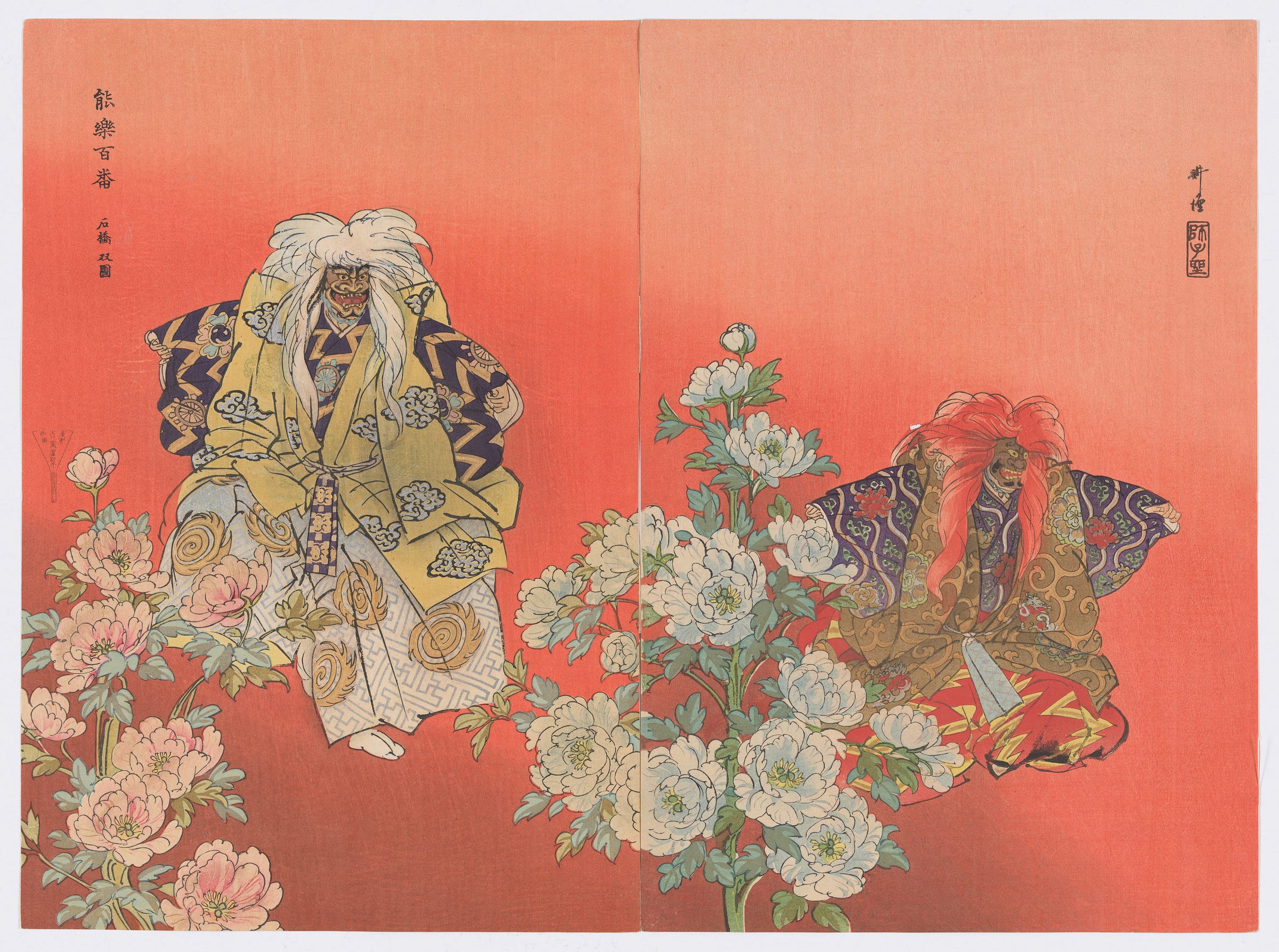
When savvy publishers realized that the eerie had become a mainstay of popular entertainment, they launched the mass production of ghost prints to appeal to the Japanese public’s new fascination with the supernatural. Soon, these highly colored prints were all the rage. Their influence spread across the seas to Europe and the Americas, where painters like Whistler, Degas, and van Gogh were so captivated by their colors and composition that a new artistic vogue was born in the Occident: “Japanisme.”
The colors of these ghostly prints are still riveting. A radiant palette of blues, reds, yellows, and metallics (gold, silver, tin, and brass) pulsates throughout Staging the Supernatural. The vivid hues create a visceral sense of movement. It is as if the figures captured in the prints are begging for release, exclaiming “Free me—the show must go on!”





